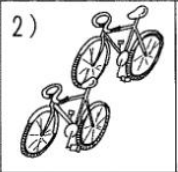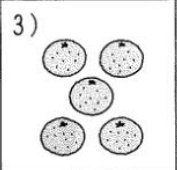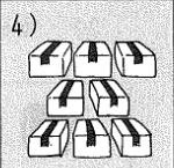Previous Lesson Recap:
Time/ Period opens the sentence. E.g “I went to Tokyo last year” / “I went to Tokyo last year in June” / “I went to Tokyo in 2012” >>>>>> Open the sentence in Japanese with ‘last year | kyonen | きょうねん’
S:
I went to Tokyo last year. | Kyonen Tokyo e ikimashita. | きょうねん とうきょうえ いきました。
I went to Tokyo in June last year. | Kyonen no roku gatsu ni Tokyo e ikimashita. | きょねん の ろくがつ に とうきょ え いきました。
I went to Tokyo in 2012. | 2012 nen ni Tokyo e ikimashita. | 2012 ねん に とうきょ え いきました。
We use the particle ‘ni | に’ as a time and date marker. ***not to be used for certain time markers (see Day #8.2)
LESSON #6
Lesson 6 is about describing daily activities like eating, watching TV, playing sports, as well as inviting someone to do activities together. 🙂 We also start on Kanji.
Check out the Vocabulary section for different activities in Japanese.
PLACE + VERB [Action word and place]
To phrase where an action is taking place, the particle ‘de | で’ is used. It’s also used as a direction marker, “by”. Note that the verb is placed at the end of the sentence, unlike in the English Language.
I study at school. | Watashi wa gakko de benkyoshimasu. | わたし は がっこう で べ んきょします。
OBJECT + VERB
In the case of doing ~, ~ being the object, the same phrasing as above is applied. The verb is placed at the end of the sentence. To link the object and verb, the particle ‘wo | を’ is used. It is an object marker, used after the grammatical object.
In the case of “eat ~”: the object “~” comes first, followed by the verb “eat”. Simply put: Object + *particle wo + Verb
S:
[present tense]
I eat toast. | Tosuto wo tabeshimasu. | トースト を たべします。
I eat rice. | Gohan wo tabeshimasu. | ごはん を たべします。
[past tense]
I drank orange juice. | Orenji jusu wo nomishimashita. | オレンジ ジュース を のみしました。
[including time period – always in the beginning of the sentence]
I ate a sandwich this morning. | Kesa sandoichi wo tabeshimashita. | けさ サンドイッチ を たべしました。
I eat toast and egg every morning. | Mainichi tosuto to tamago wo tabeshimasu. | まいにち トースト と たまご を たべします。
[negative]
I didn’t eat anything. | Nani mo tabeshimasu. | なに も たべします。
Q:
What did you eat this morning? | Kesa nani wo tabeshimashita ka? | けさ なに を たべしました か。
What do you drink every morning? | Mainichi nani wo nomishimasu ka? | まいにち なに を のみします か。
PLACE + OBJECT + VERB
Sequence: Place + *particle de + Object + *particle wo + Verb
S:
I ate a hamburger at home. | Uchi de hanbaga wo tabeshimashita. | うち で ハンバーガー を たべしました。
FREQUENCY
1. Always |
2. Often |
3. Sometimes | Tokidoki
– – – – – – – – – – – – – – – – – – – – – – – – – – – – – – –
KANJI
We start off with 10 Kanji words – the basics. A single Kanji word can have multiple readings and meanings.















